The haunting tale of North Korea's 'Hotel of Doom'
Doomed from the start
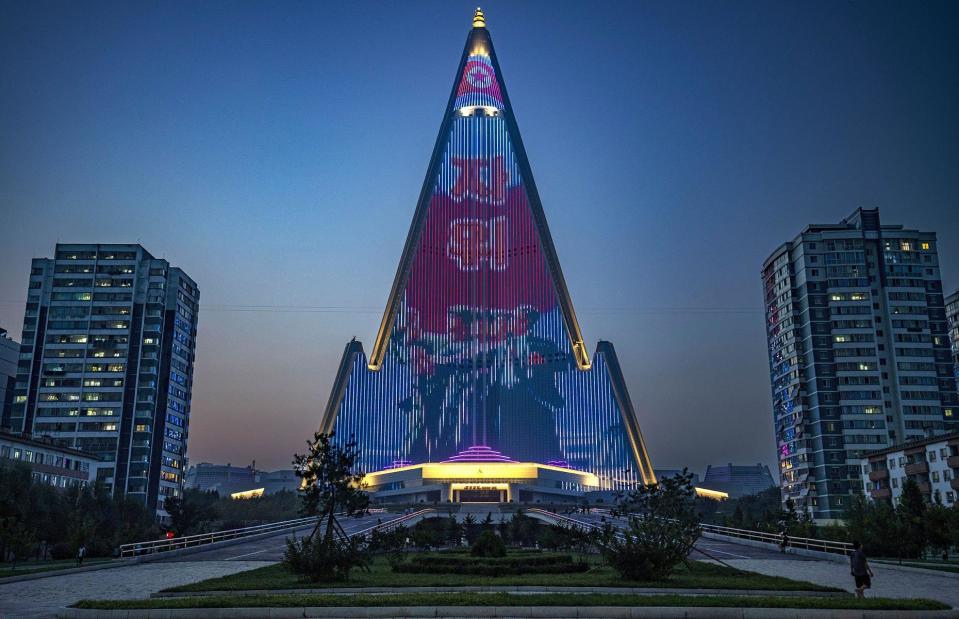
Hemis/Alamy Stock Photo
Dreamt up in the 1980s as a show of North Korea's Cold War might, the Ryugyong Hotel has never, even briefly, opened its doors. Instead, it's been towering above North Korean capital Pyongyang for almost 40 years – unfinished, semi-abandoned and shrouded in mystery, but not forgotten.
We uncover its chequered past and curious secrets.
A troubled past
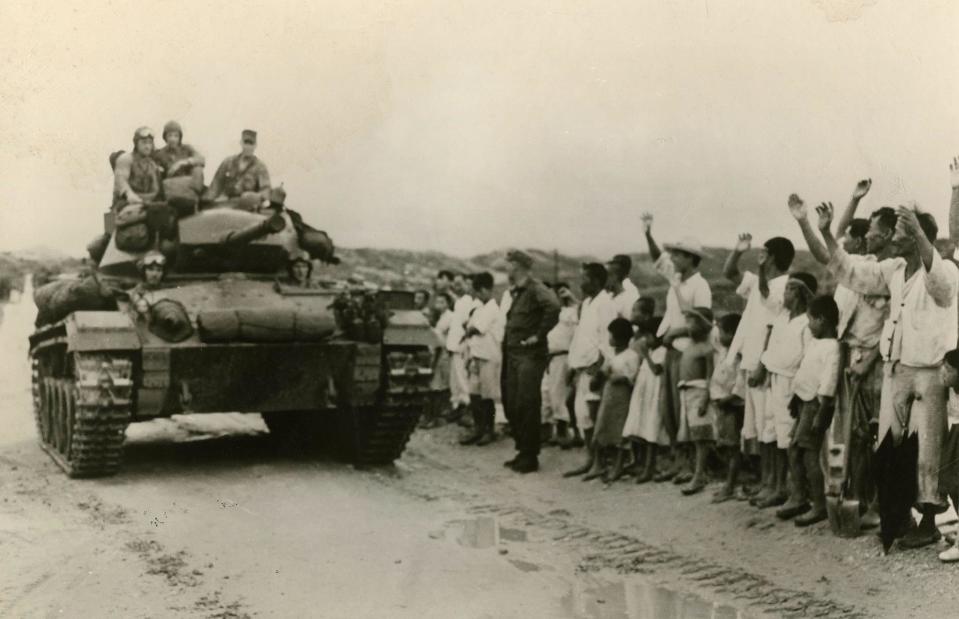
colaimages/Alamy Stock Photo
A single nation before it was annexed by Japan in 1910, the Korean peninsula's last century or so has been extremely turbulent. At the end of the Second World War, Korea – which was formerly occupied by the Japanese – was divided into two parts: South Korea and North Korea.
The former is a capitalist country with US support, which became a democracy in 1987 and is now a tech hub and one of the world's foremost economies. Meanwhile, North Korea is a totalitarian communist state run by the Kim dynasty. It was supported by the Soviet Union until its demise in 1991.
The Cold War rivalry between the two countries and their different systems was a big part of the motivation behind the Ryugyong Hotel project.
The story begins
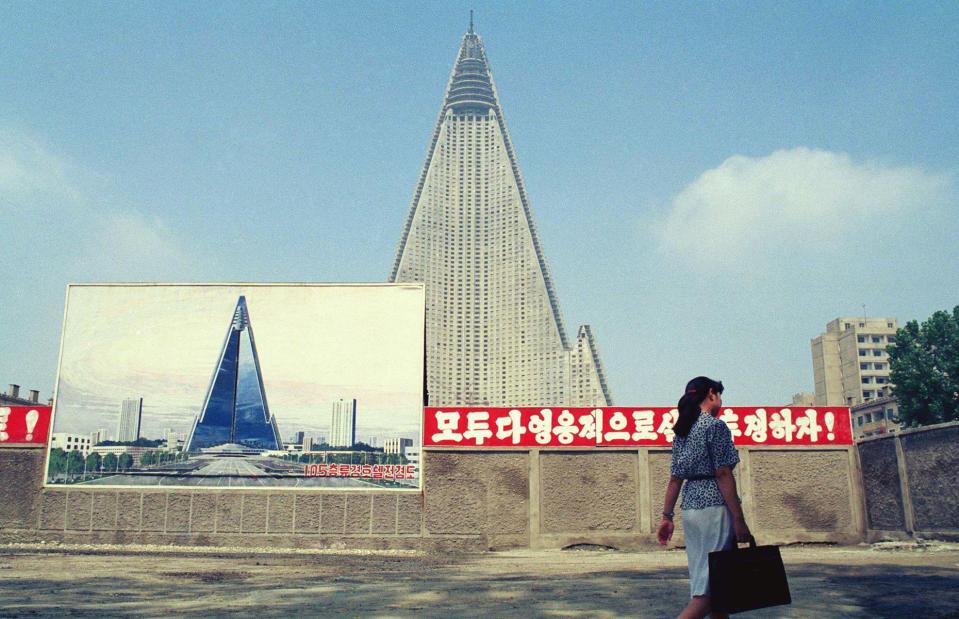
Associated Press/Alamy Stock Photo
The hotel's story began in 1986, when the Westin Stamford Hotel opened in Singapore and became the tallest hotel in the world. It was built by a South Korean company, and the Ryugyong Hotel was partly conceived to steal away the Westin Stamford's record, as well as to open up a channel for Western investment in North Korea.
It's thought that the North Korean government hoped to attract £186 million ($230m) of foreign investment when the project broke ground in 1987. The building site is pictured here in 1990.
A practical design
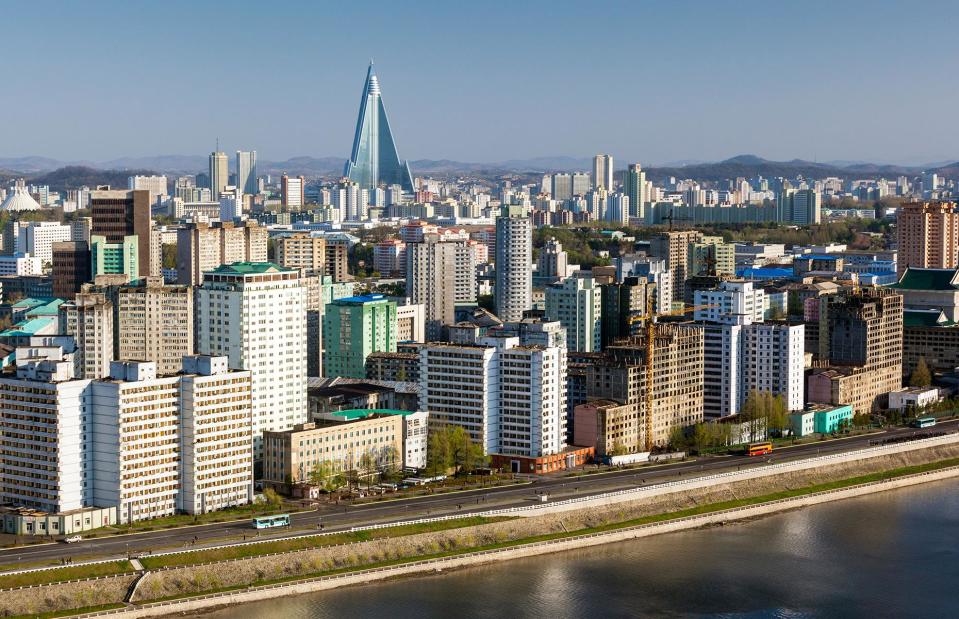
robertharding/Alamy Stock Photo
The imposing structure consists of three wings, each of which climb up to the 1,080-foot-high (330m) tip and slope at a 75-degree angle. However, its unusual shape is not a thought-through design feature; the North Koreans didn't have the advanced construction materials used in most modern skyscrapers and instead relied on reinforced concrete, so physics partially dictated the building's form.
To achieve the intended height, there had to be a large base and a tapered top to support the enormous weight of the building.
The tallest pyramid in the world
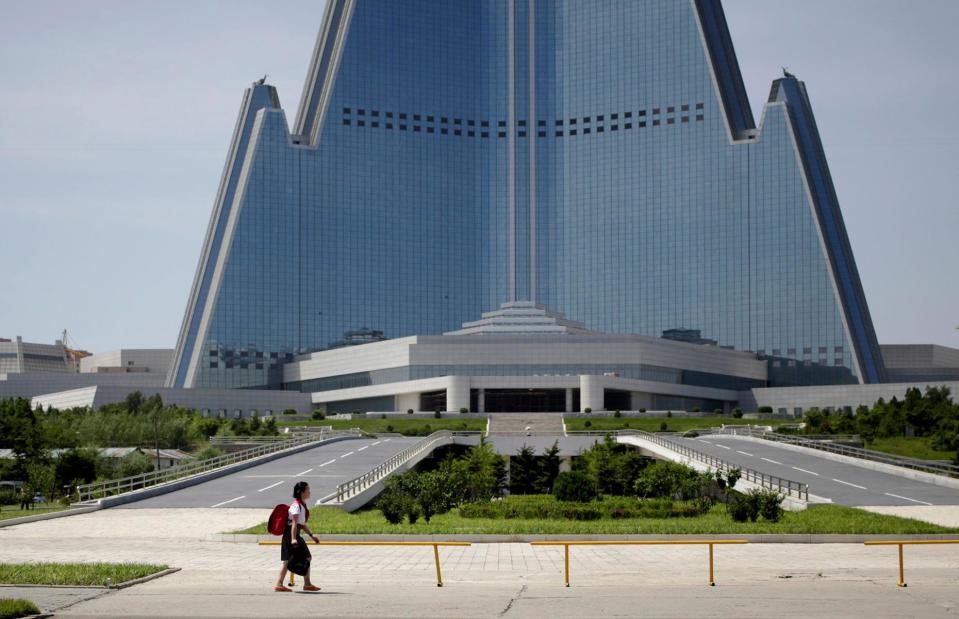
Associated Press/Alamy Stock Photo
It's hard to put the hotel's massive size into context when it's the only skyscraper piercing the Pyongyang sky, but it's the tallest pyramid-shaped building in the world, surpassing even the Shard in London and the Transamerica Pyramid in San Francisco. The total floor area is just under four million square feet (360,000sqm) – on the low side for a tower of such height and stature.
A symbol of the capital
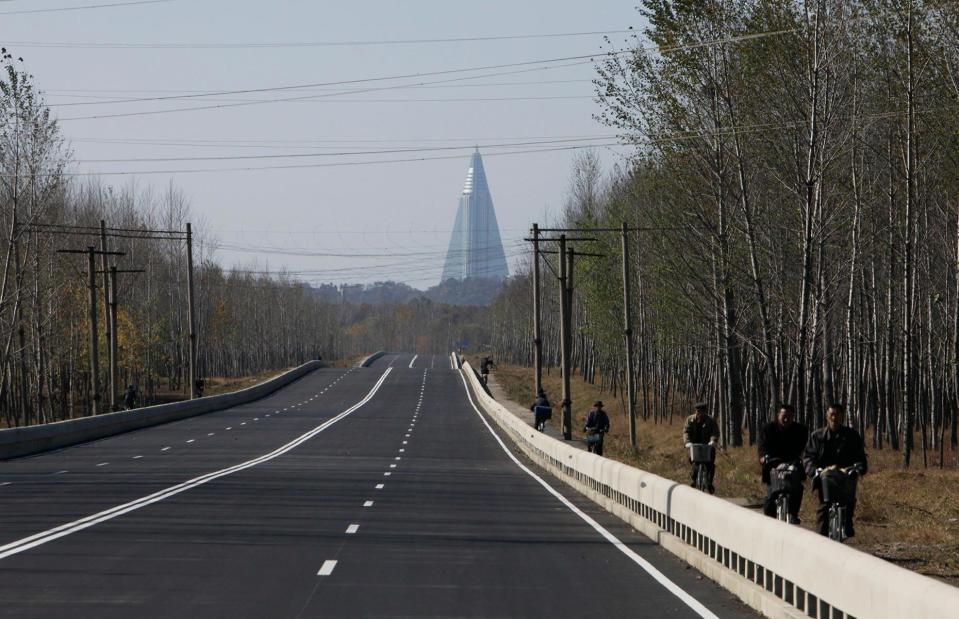
Associated Press/Alamy Stock Photo
The skyscraper is so much taller than the rest of Pyongyang that it can be seen for miles outside it – here it is pictured in 2011 on a road leading into the city. The hotel was named after a historic nickname for Pyongyang, meaning 'capital of willows'.
It was apparently intended to resemble the shape of a willow too, but the retro Soviet design made it look more like a rocket or a missile, leading local guides to sometimes humorously refer to it as 'the missile launch pad'.
Ambitious amenities
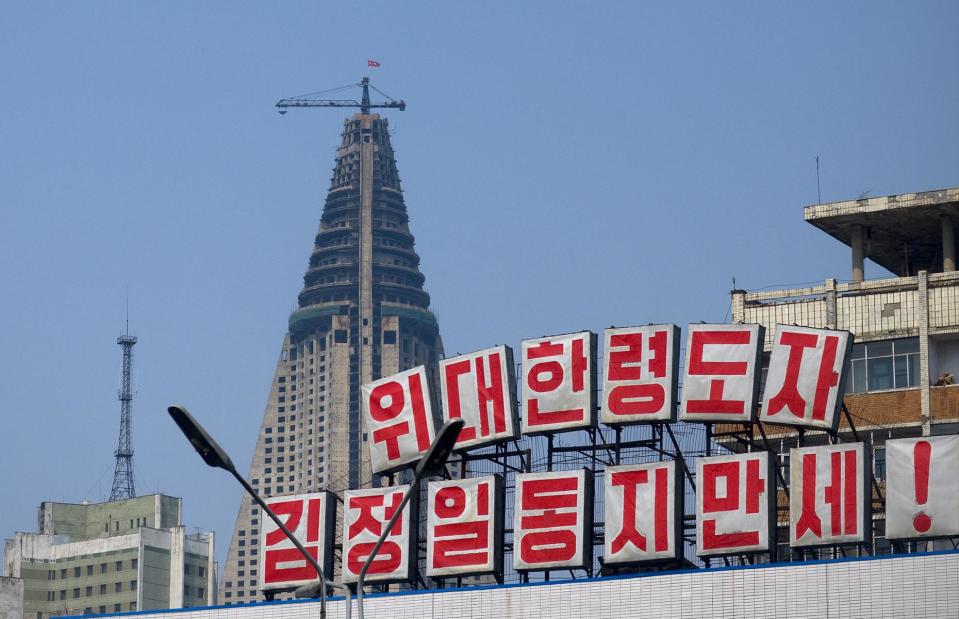
Eric Lafforgue/Art In All Of Us/Corbis via Getty Images
The body of the hotel was designed to contain at least 3,000 rooms, while the cone at the top was supposed to house eight rotating floors and a further six static floors, as well as a viewing platform. The rotating floors were intended to host five revolving restaurants offering high-end dining and panoramic 360-degree views out over the city, in addition to the hotel's most exclusive guest rooms.
Political tug of war
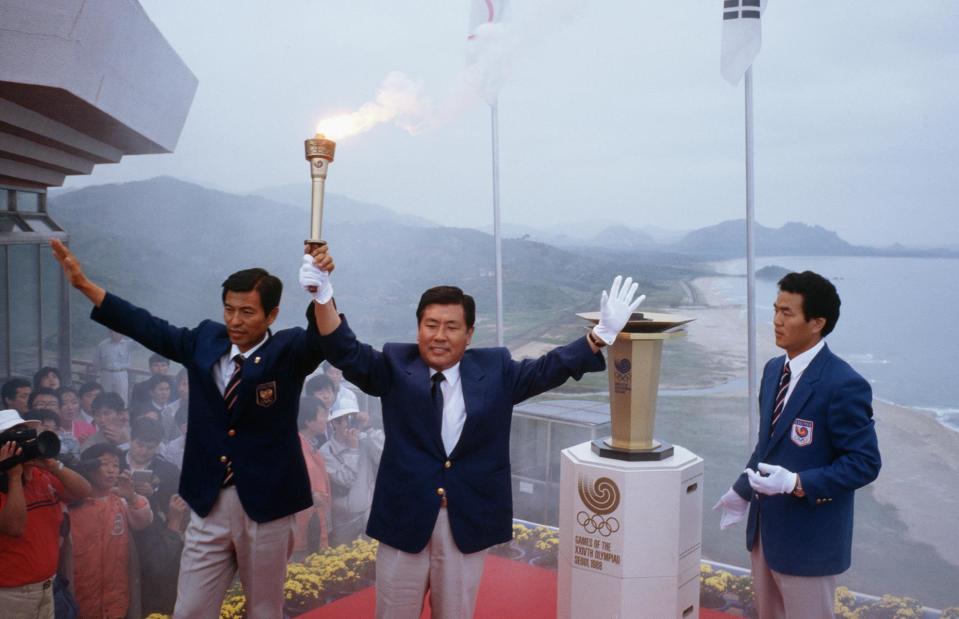
Wally McNamee/CORBIS/Corbis via Getty Images
South Korea was booming in the late 1980s – Seoul was gearing up to host the 1988 Olympics (pictured) and the country was part-way through transitioning into a capitalist democracy. The North naturally boycotted the Olympics and, as a response, organised the World Festival of Youth and Students in Pyongyang in 1989.
The Ryugyong Hotel was supposed to be ready for the event – to debut on the world stage as a symbol of North Korean greatness. But thanks to a series of engineering problems, it was unfinished when the festival began.
A failed project
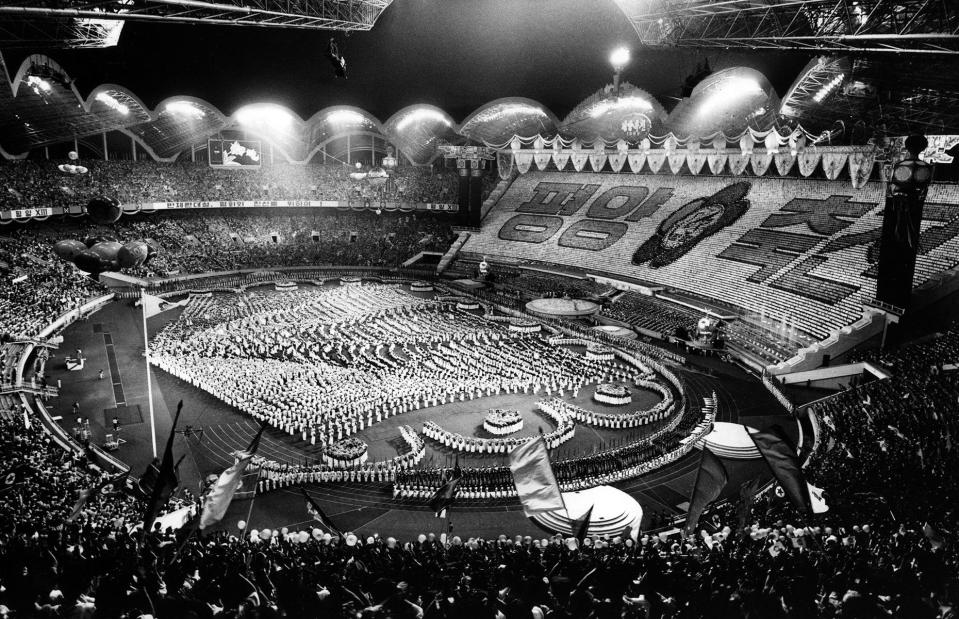
Associated Press/Alamy Stock Photo
The government had already poured billions into expanding Pyongyang's airport, paving new roads and building a stadium for the festival, and the start of the collapse of the Soviet Union later in 1989 was a disaster for North Korea. Deprived of vital aid and investment and with nowhere else to turn, the secretive state entered full-scale economic crisis.
The grand opening of the hotel was replanned to coincide with the 80th birthday celebrations of then-President Kim Il Sung in 1992, but this too never occurred.
Constructions ends
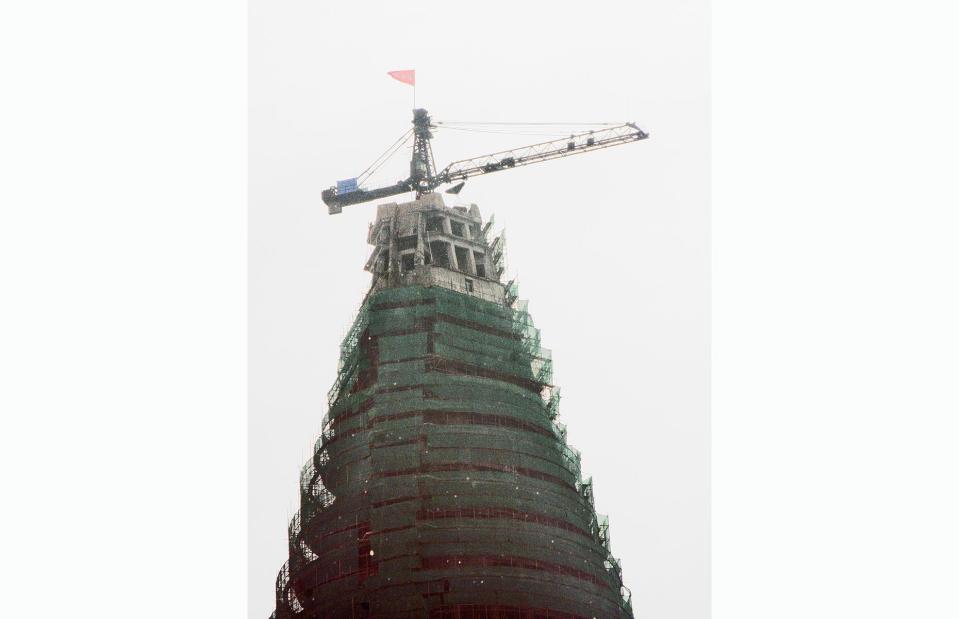
Mark Scott Johnson/Wikimedia Commons/CC BY 2.0
The skyscraper's concrete exterior was finished by 1992, but construction then ground to a halt so rapidly that a crane was left abandoned at the building's top. Japanese newspapers estimated that the construction had so far cost the North Korean government around £605 million ($750m), or 2% of North Korea's GDP at the time.
The building's menacing shadow stood over the capital for another 16 years before any work resumed.
Hotel of Doom
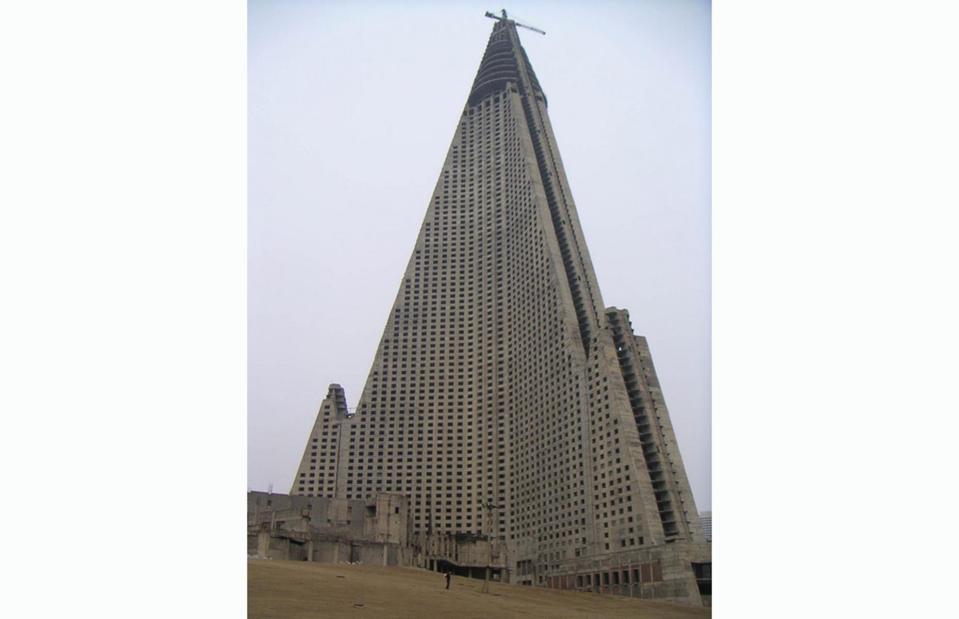
Public domain/Wikimedia Commons
For years, the building's hollow shell lay abandoned – a hundred or so seemingly empty floors gathering dust and dirt – resembling something out of a dystopian, apocalyptic movie. It was during this time that the monstrous structure, towering over the rest of Pyongyang's buildings, earned the moniker 'Hotel of Doom'.
The Egyptians come to the rescue
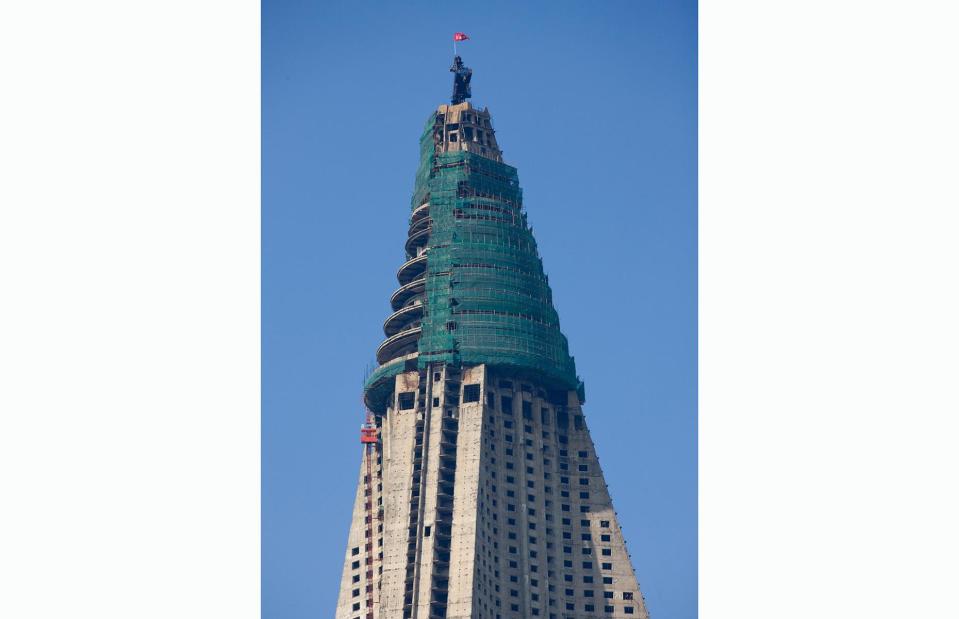
ERIC LAFFORGUE/Alamy Stock Photo
After the 16-year hiatus, construction restarted in 2008, when an Egyptian conglomerate contracted to install North Korea's 3G network also resumed work on the hotel. The by-then rusty crane was finally removed from the tower's top and workers clad the building in the sparkling glass and metal panels that adorn it today.
The project was completed in 2011 and it was announced that the hotel would be finished by the 100th birthday celebrations of the late president Kim II Sung a year later.
A helping hand...
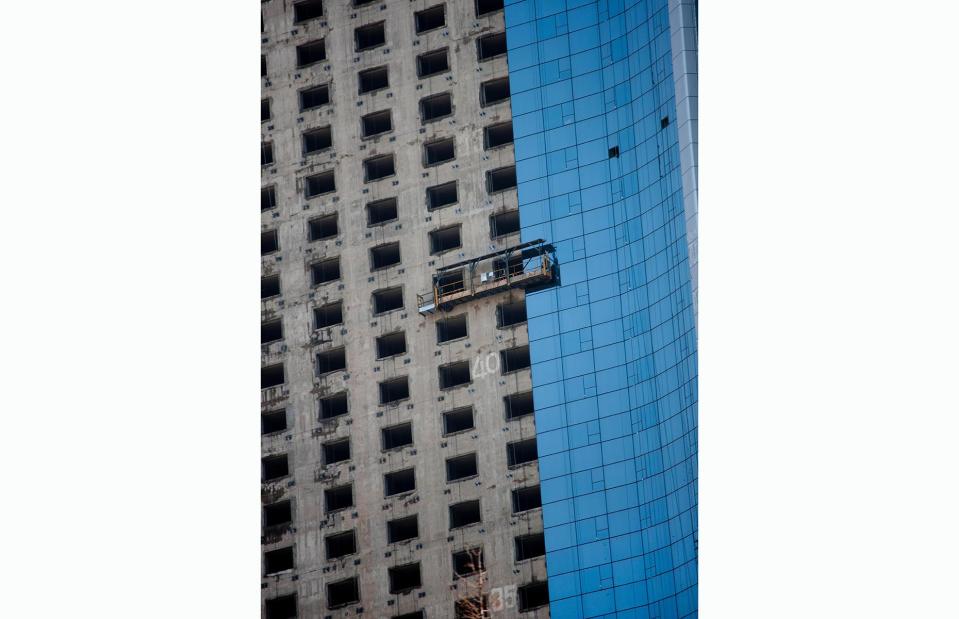
ERIC LAFFORGUE/Alamy Stock Photo
A year after the exterior of the hotel was finally finished, luxury hotel group Kempinski announced they would assist in its management and promised a partial opening by the middle of 2013. The deal promised 150 hotel rooms, shops, office spaces, restaurants, ballrooms and a cinema on the lower floors.
The announcement was met with surprise – particularly in South Korea.
...but it's then retracted
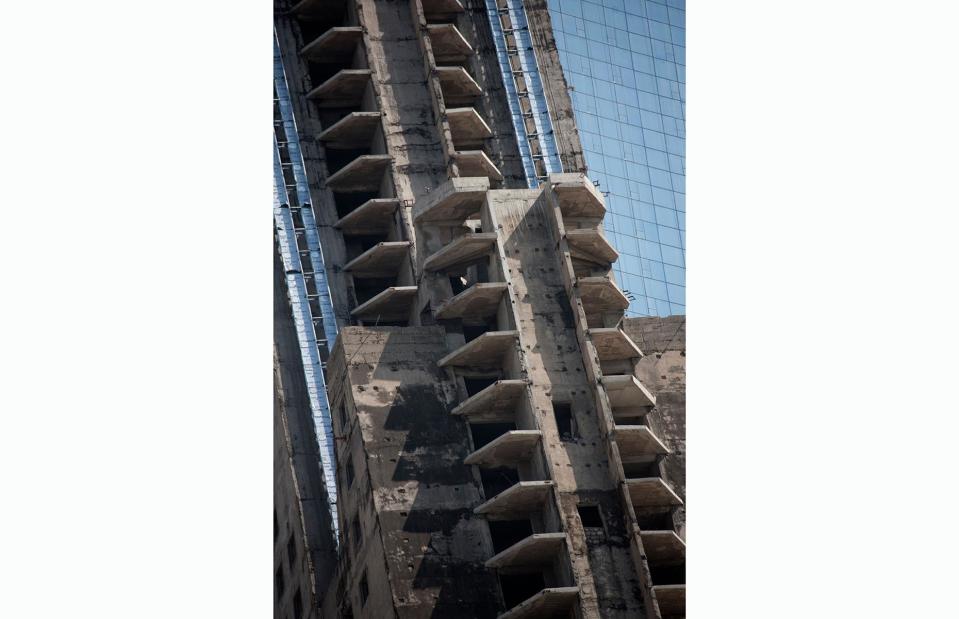
ERIC LAFFORGUE/Alamy Stock Photo
Kempinski pulled out of the deal just a few months later, saying that "market entry is not currently possible". Some pointed to tensions surrounding the 2013 North Korean nuclear test, and the statement also reignited rumours that the building was structurally unsound – rumours fuelled by a 23-storey apartment block collapsing in Pyongyang a year later due to shoddy construction practices.
Further whispers alleged that the lift shafts were not correctly aligned, but these suggestions have never been proven.
A new purpose
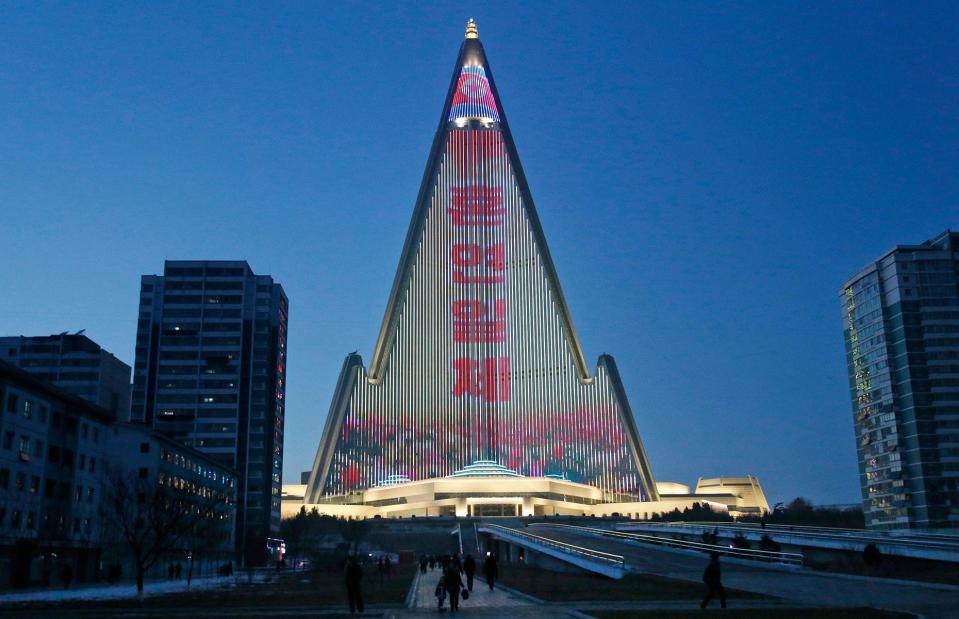
Associated Press/Alamy Stock Photo
In 2018 the building was brought back to life once again, as a wall of LED lights was added to an entire side of the hotel. These lights have played a role in government propaganda efforts, projecting clips of North Korean history and sprawling political slogans across the hotel's vast, glassy surface, with a huge North Korean flag splashed across the hotel's top.
A political staging area
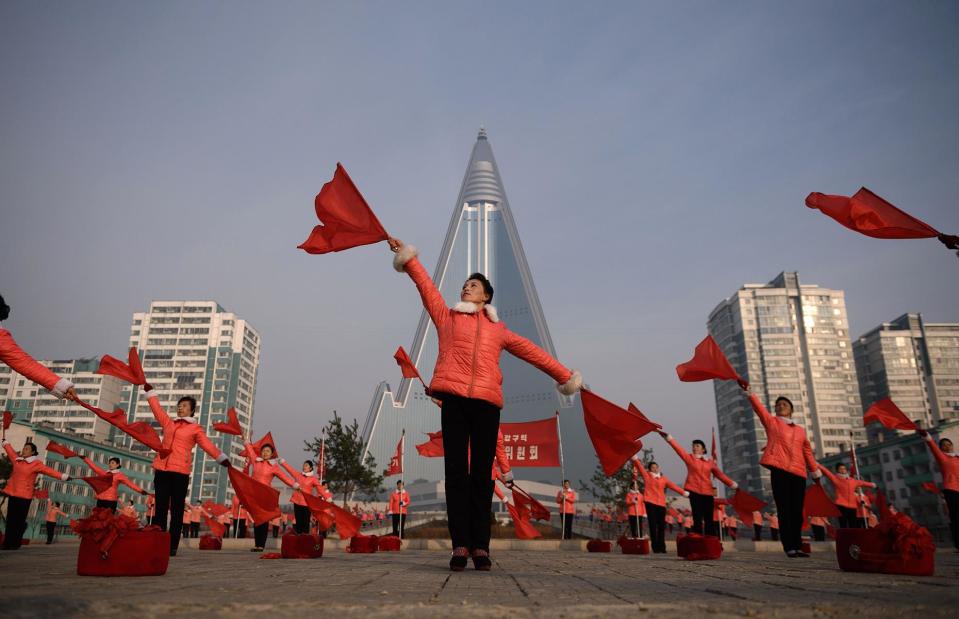
ED JONES/AFP via Getty Images
Even when the lights are switched off, the hotel serves as a dramatic backdrop to political propaganda performances. For example, an arts troupe that North Korea sent to the 2018 Winter Olympics in South Korea did a widely-publicised performance in front of the building before they left for South Korea; while in 2009, May Day (also known as International Workers Day) was celebrated with fireworks launched from the sides of the skyscraper.
Is there a need for a new hotel?
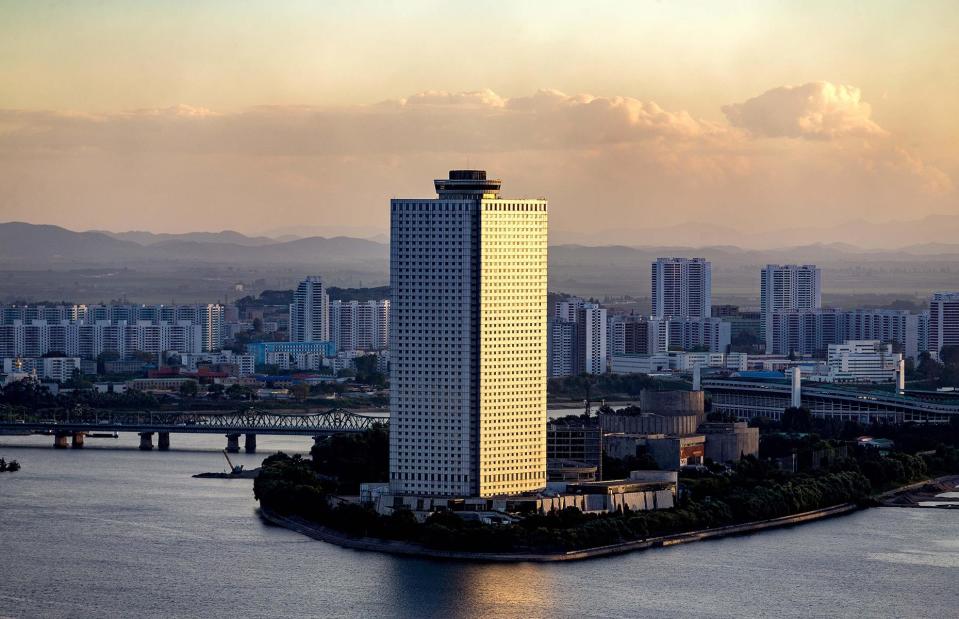
ZUMA Press, Inc./Alamy Stock Photo
Despite North Korea's aversion to foreigners, the hermit state has hosted a steady trickle of organised tours over the years, so there are already several functional hotels in the capital. The Yanggakdo International Hotel (pictured) is the largest, set on an island in the Taedong River, while the Ryanggang Hotel is generally considered the fanciest – that is until the Ryugyong finally opens.
A rare look inside
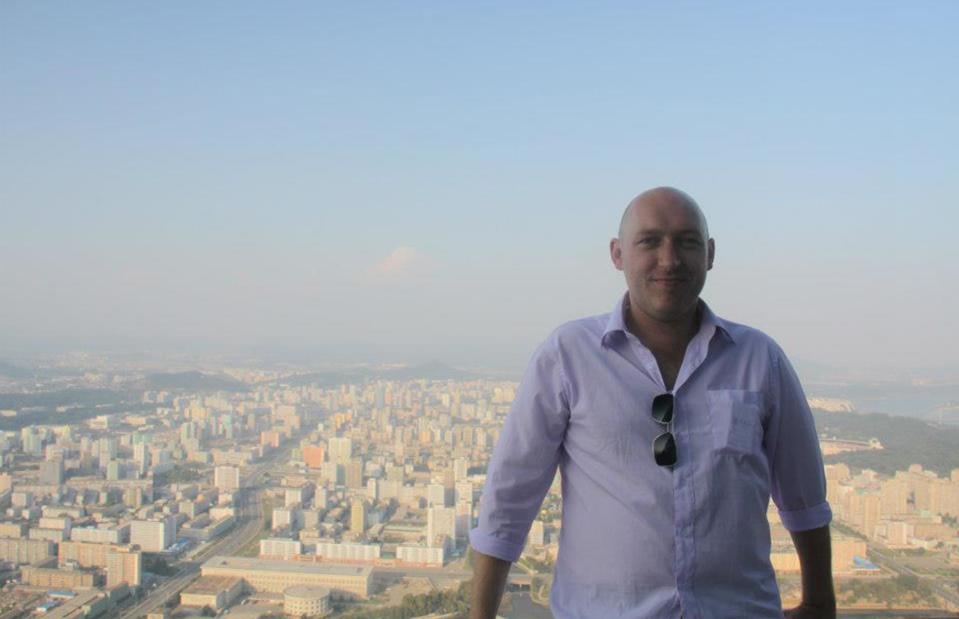
Courtesy of Koryo Tours
North Korea is extremely secretive about the hotel, so Simon Cockerell (pictured), a tour guide and leading North Korea tourism specialist, couldn't believe his luck when he and his colleague Hannah were finally allowed a sneak peek back in 2012. They're the only two confirmed Westerners to have been allowed inside the building.
While leading tours with Koryo Group, Simon has visited North Korea a whopping 182 times, starting in 2002 and finishing in 2019, when North Korea closed its borders.
Glass and metal
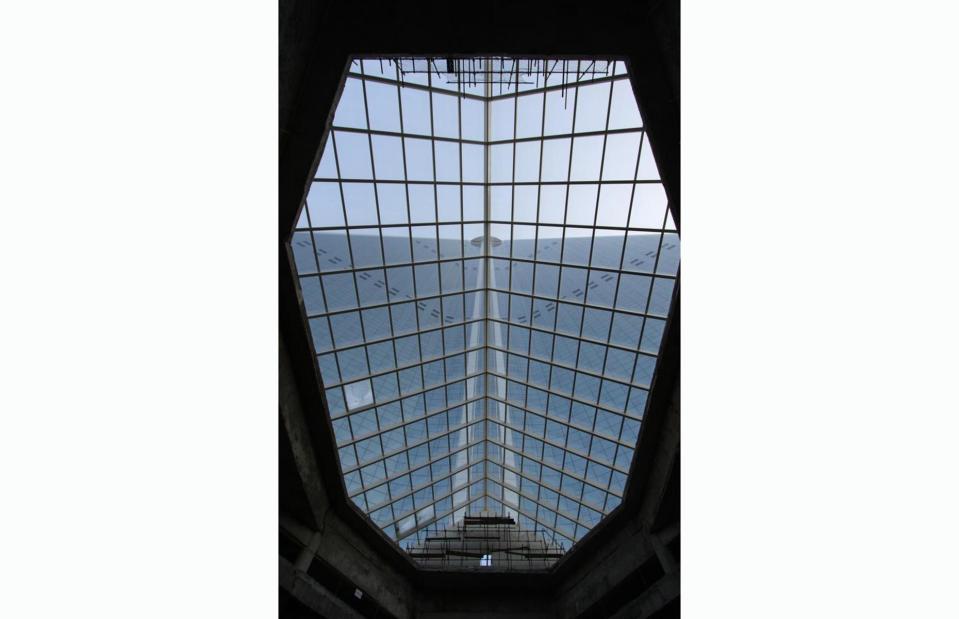
Courtesy of Koryo Tours
Simon's visit came shortly after the process of cladding the building with glass was completed, offering unique glimpses of the unfinished interior and rare close-ups of the structure's shiny new panelling.
Cement and concrete
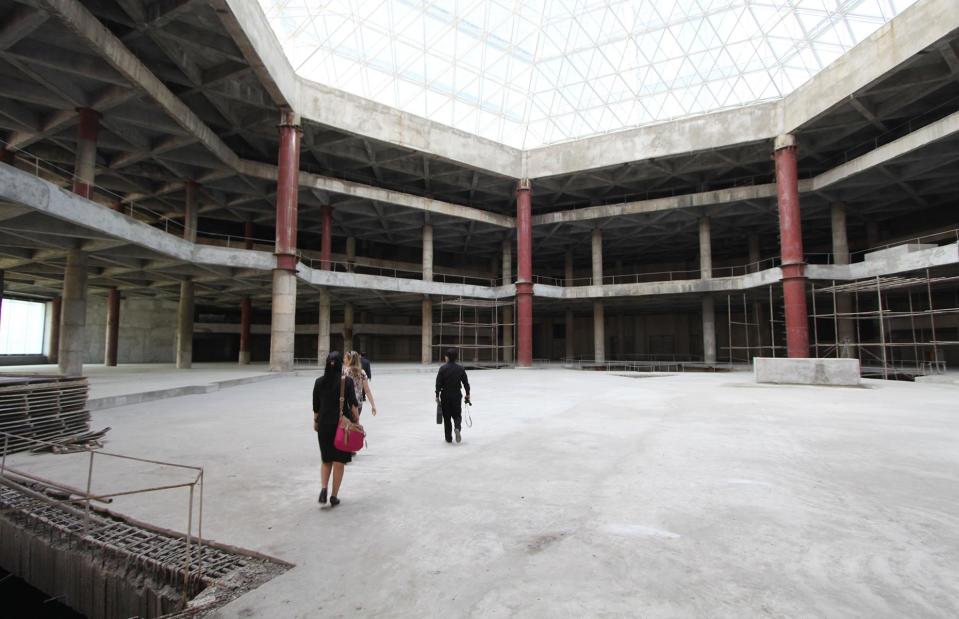
Courtesy of Koryo Tours
Simon describes the interior as "very much a work in progress". "It was all cement and concrete," he says, and the inside was extremely sparse and bare.
"Since then a lot of work has been done on the lower floors at least," he adds, "but how much nearer to any form of completion it is impossible to say."
Modern spaces
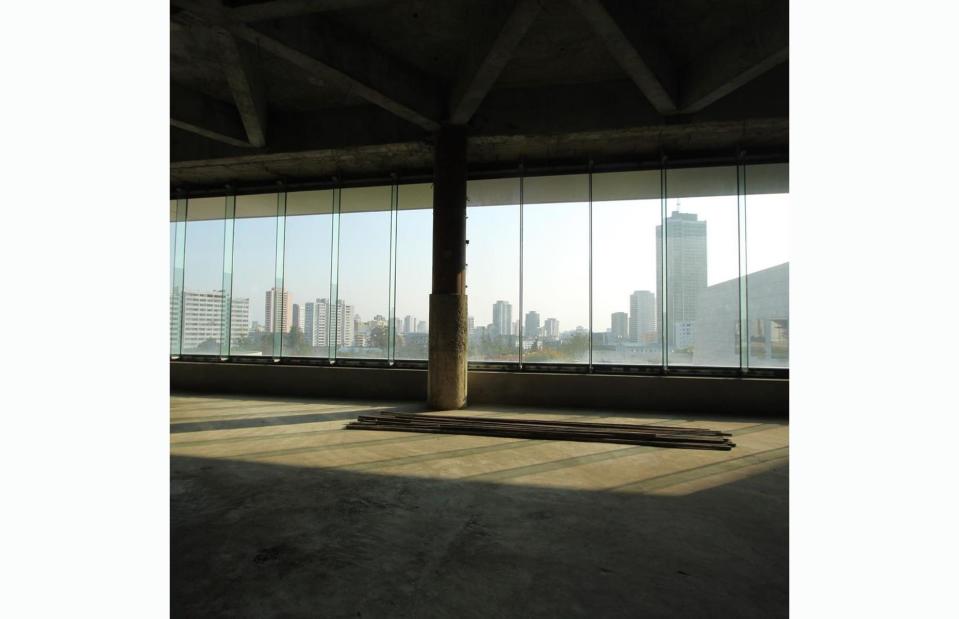
Courtesy of Koryo Tours
Some parts of the building, like this interior cityscape view through floor-to-ceiling windows, wouldn't be out of place in any office block or undeveloped apartment block in any of the world's major cities.
Welcome to the lobby
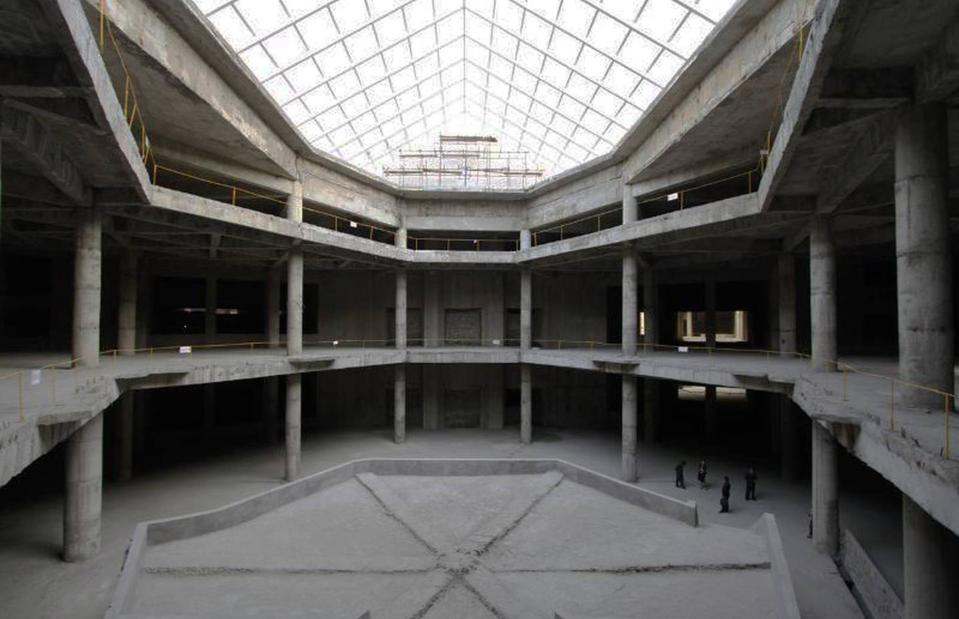
Courtesy of Koryo Tours
Simon managed to see a remarkable cross-section of the building. His tour started on the ground floor and the mezzanine areas before ascending to the 99th floor – the location of the viewing platform.
He says that it's a common misconception that the building has 105 floors; the construction elevator topped out at 99 and didn't have any other floor buttons.
The view from the top
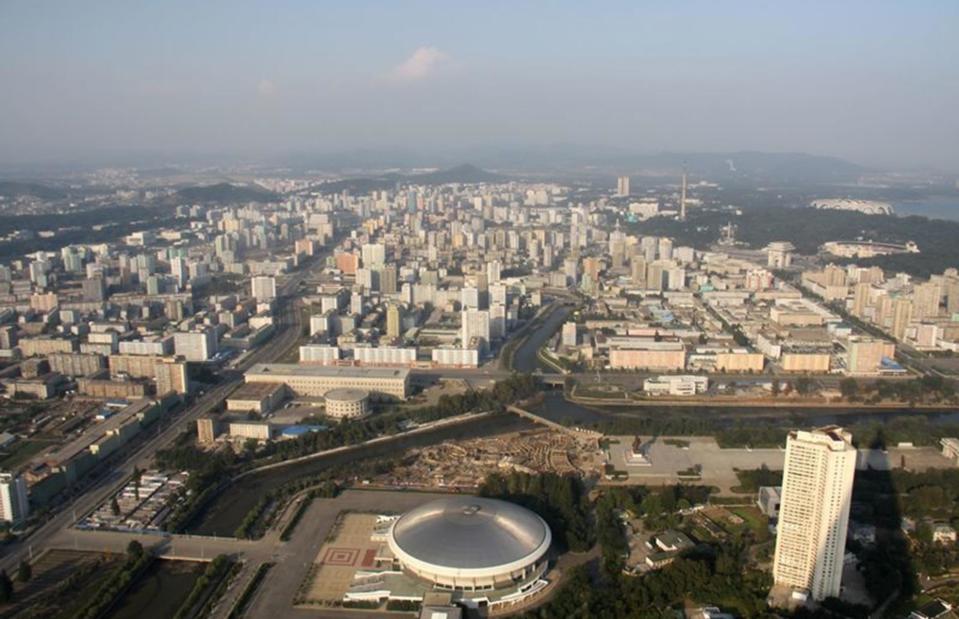
Courtesy of Koryo Tours
There's another viewing platform in Pyongyang atop the 560-foot (170m) Juche Tower, but the Ryugyong platform is nearly twice as high. "You could see the entire city and the sensitive government area nearby too," says Simon.
"I did ask when it opens if there would be limits on how people could take photos up there and was told that this would be decided in the future."
Piercing the city skyline
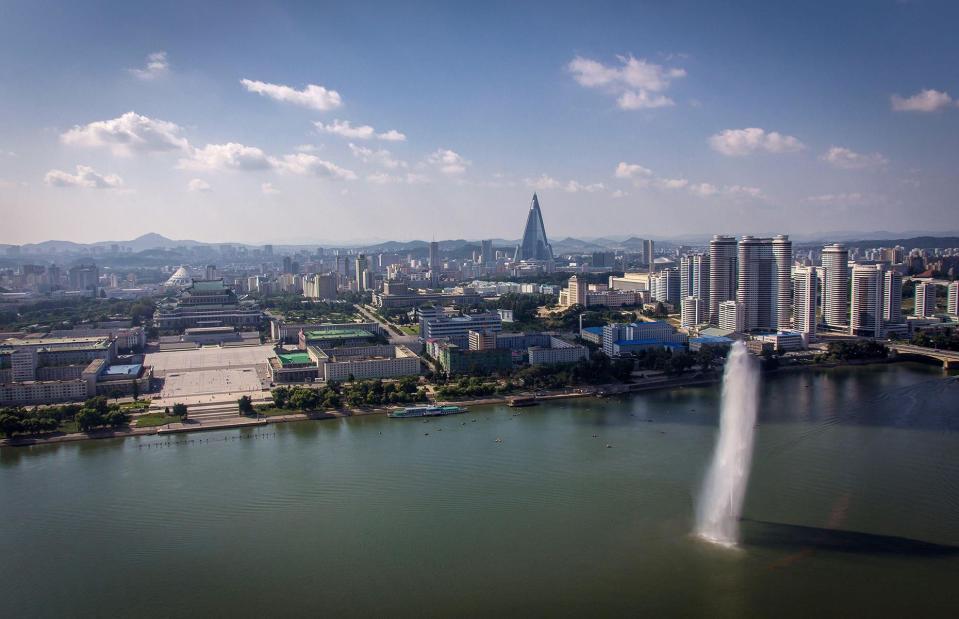
Benoit Cappronnier/Alamy Stock Photo
Here, the skyscraper can be seen from the viewing platform at Juche Tower, the second tallest monumental column in the world after the San Jacinto Monument in Texas in the United States. The San Jacinto Monument is 567 feet (172m) tall, edging Juche Tower into second place by roughly the height of an average refrigerator.
Pyongyang in miniature
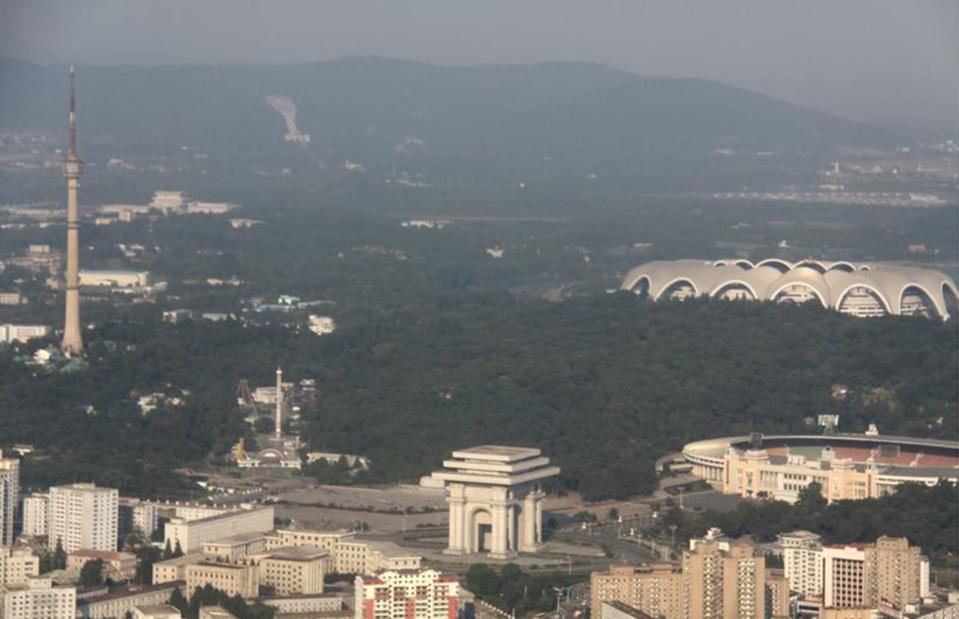
Courtesy of Koryo Tours
From the Ryugyong viewing platform most of Pyongyang is so far below you that it looks like it's made from Lego, but you can also spot other important North Korean building projects. One side yields views of the so-called Arch of Triumph and the Rungrado 1st of May Stadium, also known as the May Day Stadium, which claims to be the world's largest with a capacity of 150,000.
The myth of failure
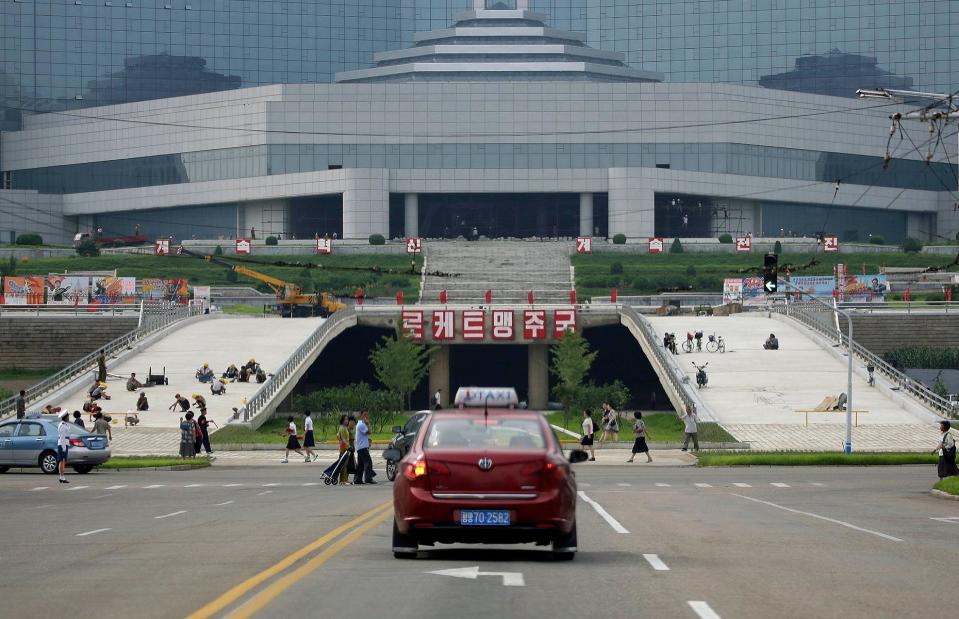
Associated Press/Alamy Stock Photo
Some reports say the government is trying to pretend the building isn't there and is airbrushing it out of official images until it's open. Simon says that's not true: "It appears on books, is always mentioned with pride and is no secret."
He also says locals don't mind the time it's taking to finish it: "The timescale is long, but Pyongyang is not Dubai or Shanghai, so I don’t think people are really that bothered. Also they've built all kinds of prestige areas in the capital that look very impressive since then, so there's much for people to be proud of in terms of construction in the capital. It isn’t the weird white elephant that is often assumed."
National pride
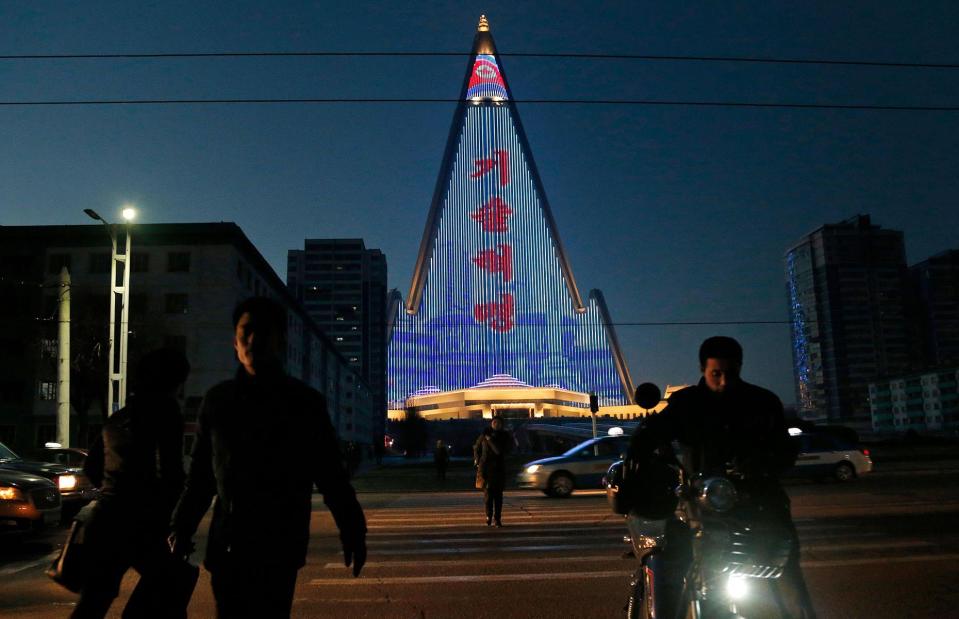
Associated Press/Alamy Stock Photo
Simon predicts that the hotel could successfully be used as a propaganda tool in the future. "I know many people imagine it is some symbol of shame, but I think locals see it differently," he says.
"They see it as a long-term project, and also see the delays in completion as being the fault of the outside world (basically the US), which is blamed for everything in North Korea. No doubt if it finally opens, it will be much publicised there as some kind of massive victory over enemy forces."
What's next?
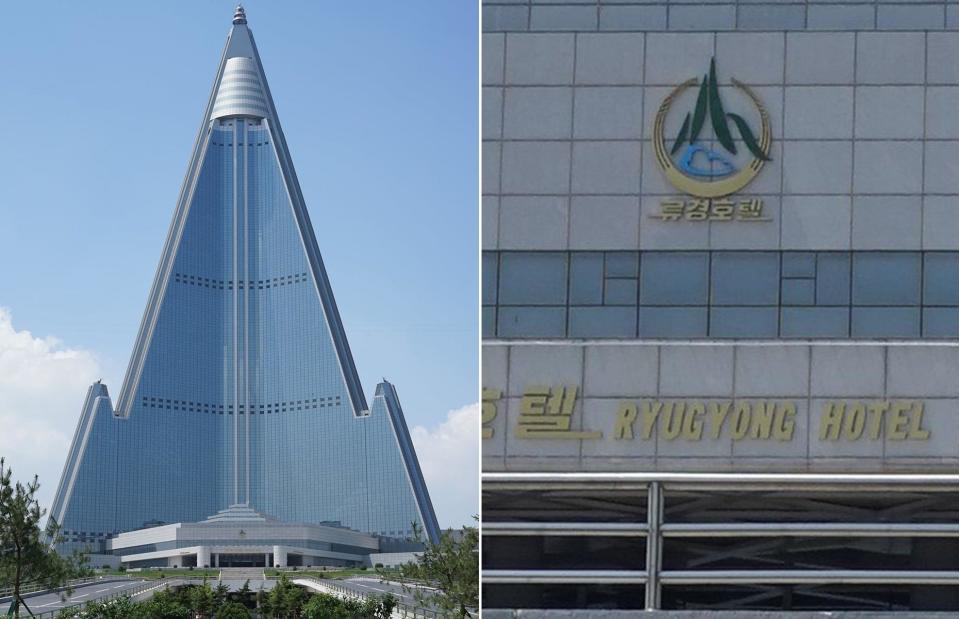
Alek Sigley/X
In June 2019, new signage appeared above the hotel's entrance bearing the hotel's name in both Korean and English and its logo, but it remains impossible to tell whether it's any closer to completion. It was shared on social media platform X (then Twitter) by Alek Sigley, an Australian tour guide and blogger who was later detained and expelled from North Korea on espionage charges.
Light shows for now
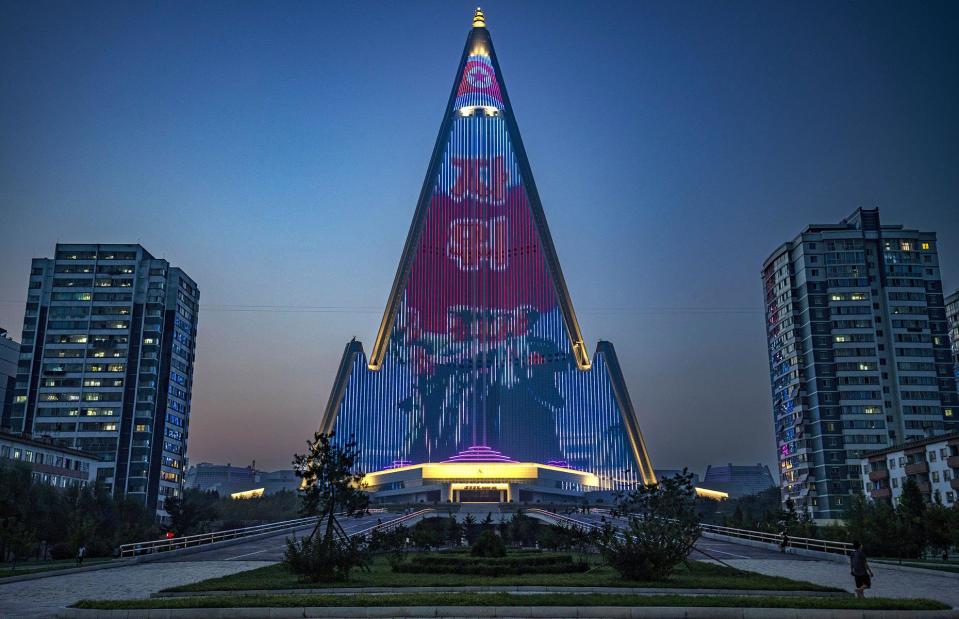
Hemis/Alamy Stock Photo
For now, light shows of still and moving images appear every evening between 7-10pm and have become part of daily life for Pyongyang locals. But there's currently no sign of any building works happening, nor any further information on when the hotel might finally open.
We might have to wait a little while yet to see if the Hotel of Doom can shed its nickname and finally fulfil its purpose...
Read on for more tourist attractions that failed to live up to the hype

